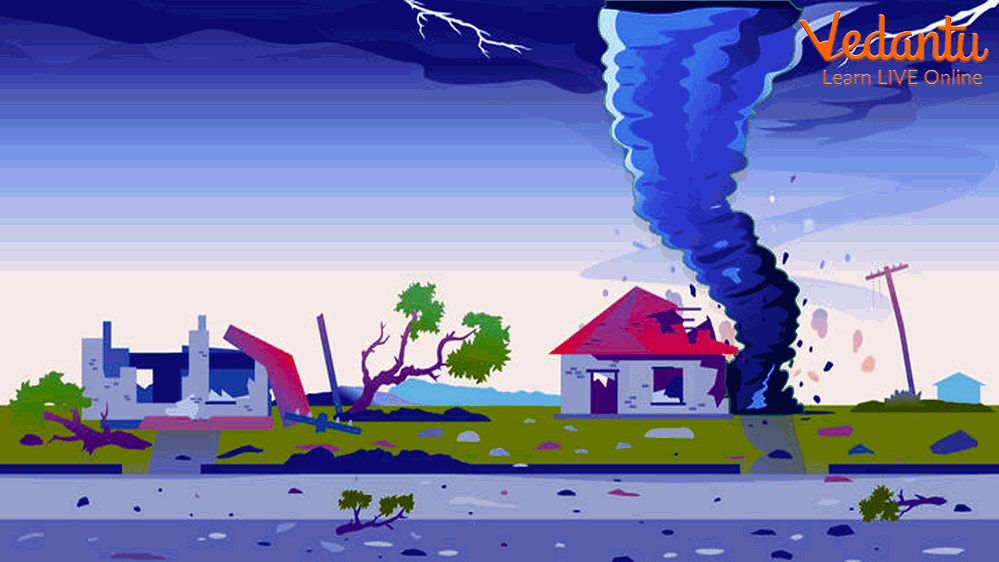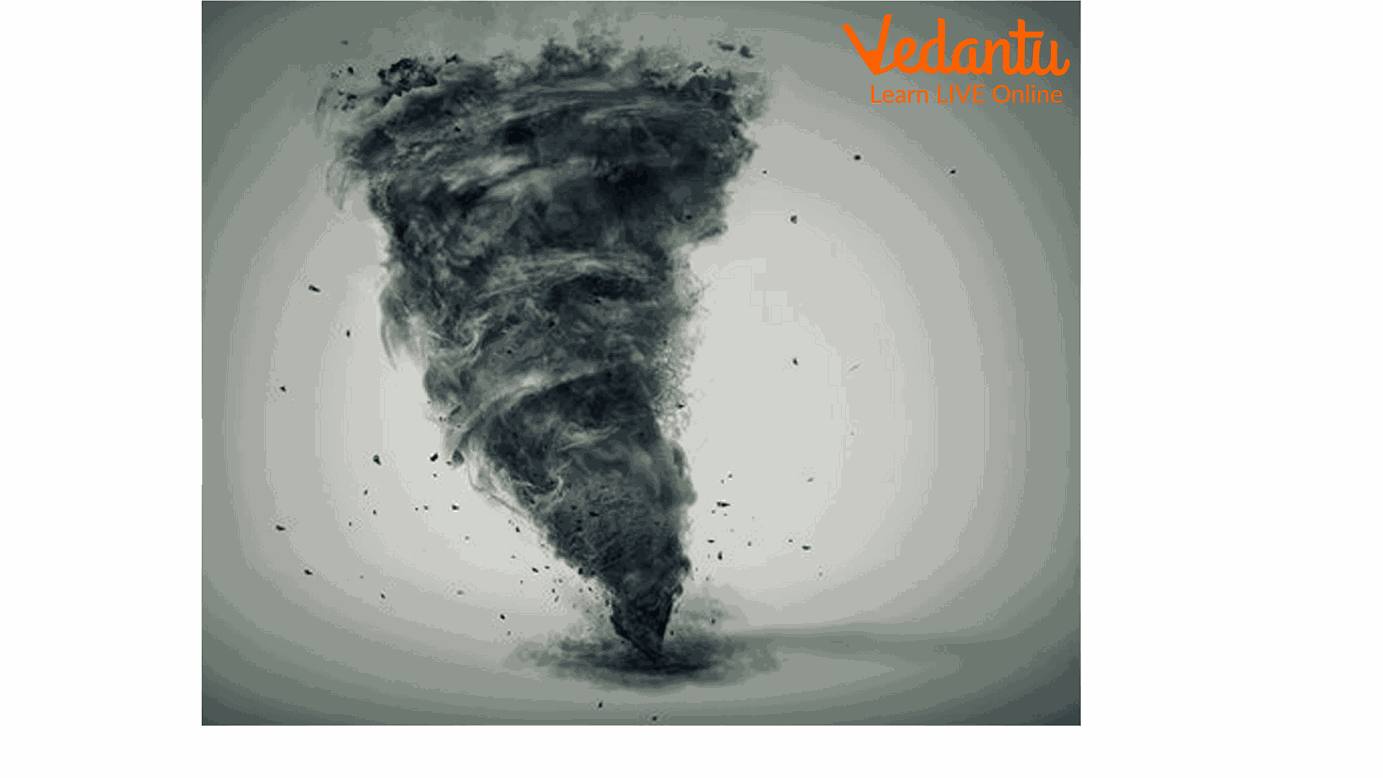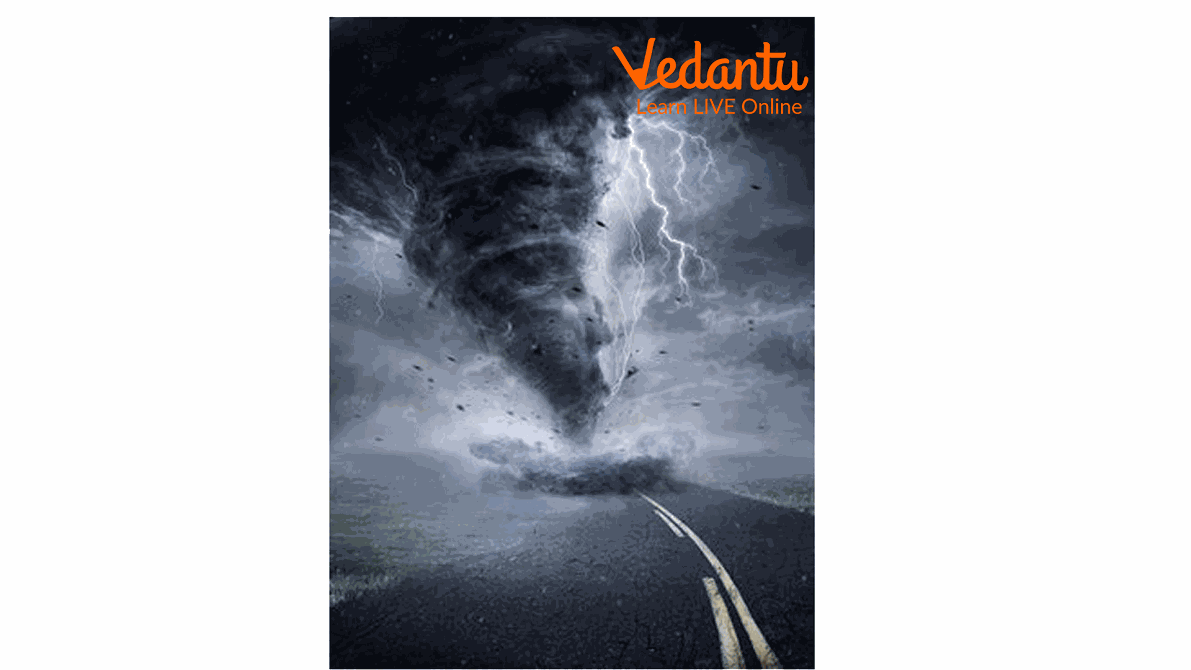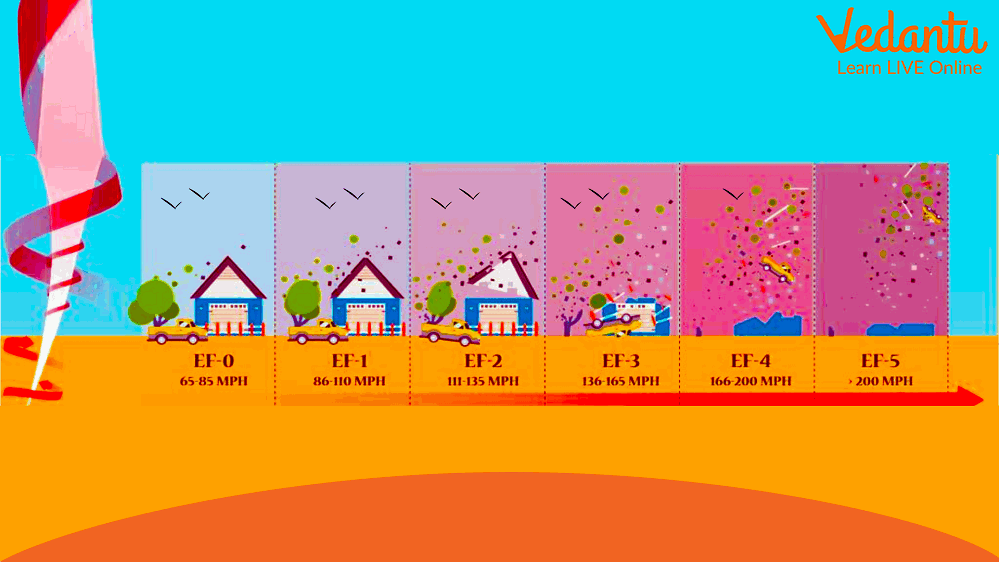




An Introduction to Tornado
Tornadoes are storms in which powerful rotating winds form a column that extends from a cloud to the ground. Tornado winds are the strongest on Earth. They have top speeds of up to 300 miles per hour (500 kilometers per hour). High winds can flatten buildings and propel heavy objects into the air, such as cars. However, most tornadoes are brief and cause minor damage.

Running away from Tornado
Tornado Features
The whirling winds of a tornado are visible due to water droplets in the air. A funnel cloud is a visible column. A funnel cloud can take the form of a cone, pillar, or tube. It can range in width from a few feet to hundreds of feet. In the Northern Hemisphere, winds usually blow counterclockwise, while in the Southern Hemisphere, winds blow clockwise.
Once a tornado touches the floor, it travels across the land at about 28 miles (45 kilometres) per hour. As a result, tornadoes typically move west to east. Tornadoes are typically only two or three minutes long. However, tornadoes can last for 15 minutes or more.

Tornadoes - Spinning Thunderstorms
Types of Tornadoes
A supercell is a large, long-lasting thunderstorm. It is capable of forming some of the most powerful and violent tornadoes.
A waterspout is a spout that forms over water. When they hit land, they usually dissipate.
A landspout is similar to a waterspout, but it is on land. Therefore, it is weak and not associated with an air vortex from a thunderstorm.
Gustnado - A small tornado caused by wind gusts at a weather front.
A tornado with more than one spinning tube of air is known as multiple vortexes.

Example of Multi-vortex Tornadoes

Example of Waterspout Tornadoes
Tornado Safety
Meteorologists can forecast where and when tornadoes will form. When the weather conditions are favourable for a tornado, meteorologists issue a tornado alert. A tornado alert is issued when a tornado is spotted.
People should seek shelter in sturdy buildings if a tornado is approaching. The safest places are basements and rooms without windows. Mobile homes and automobiles do not provide adequate protection. If a person is caught outside, they should stay close to the ground, preferably in a ditch.

Survive a Tornado
Interesting Facts about Tornadoes

Scale of 0 to 5, with F0 being Tornadoes
Tornadoes are even known as twisters, cyclones, and funnels.
A wind vortex must make contact with the ground to be officially designated as a tornado.
Over 1,000 tornadoes strike the United States each year, more than any other country.
Tornadoes have the fastest winds on the planet.
Don't expect to outrun a tornado; the average tornado travels at 30 miles per hour, but some can reach speeds of 70 miles per hour.
Summary
A violently spinning column of air that makes contact with the ground, usually at the base of a thunderstorm. Tornadoes are the most damaging storms in nature. Tornadoes, which are spawned by powerful thunderstorms, can kill people and devastate a neighbourhood in seconds. Tornado winds can get speeds of up to 300 miles per hour.
FAQs on Tornado Shapes
1. What exactly is a tornado?
Tornadoes are violently circling columns of air that touch the ground and are usually associated with the base of a thunderstorm. Tornadoes are the most damaging storms in nature.
2. How do actual tornadoes form?
Warm, humid air rises inside thunderclouds while cool air falls—along with rain or hail. These conditions may result in spinning air currents within the cloud. Although the spinning winds begin horizontally, they can turn vertical and drop from the cloud, transforming into a tornado.
3. What should you not do in the event of a tornado?
DO NOT stand too close to windows or other glass objects. DO: Get out as soon as possible and seek shelter or lie flat on low ground away from trees and cars, with your head protected. DO NOT Stay in the mobile home, even if it is tied down, because most tornadoes can destroy tied-down mobile homes.
4. What are tornadoes made up of?
Tornadoes are made of air. Tornadoes have very high winds which are capable of destroying the lightest to heaviest objects on their way. Tornadoes sometimes are so strong they can even demolish huge buildings.
5. Do tornadoes have other names?
Yes, tornadoes are even known as twisters, cyclones, and funnels. Due to their appearance, they are mostly known as twisters and funnels by people.









